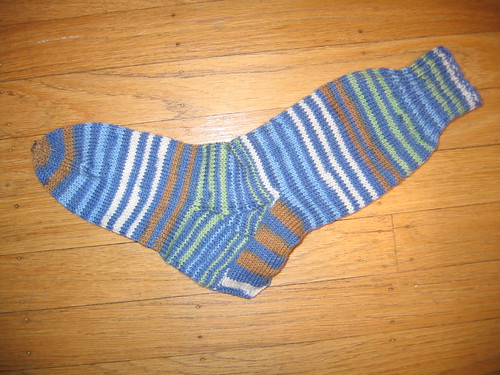
As an introduction to this sock pattern, I thought I would share a little bit of military sock knitting history with you. During the American Civil War, women knitted socks for soldiers in order to do their bit for the cause. It was considered a great honor and duty for all who could provide this service (and a way for the women to participate in the war effort).
In the Chicago Times, June 25, 1862, the following verse was written:
"Soldiers brave, will it brighten the day,
And shorten the march on the weary way,
To know that at home the loving and true
Are knitting, and hoping, and praying for you?"
During this time, there was a significant lack of funds for military clothing. Socks were an item especially required, and often a "call to the needles" was published in various papers asking women to knit socks for soldiers.
I found a pattern on the internet published in the "Mobile Register and Advertiser, January 1, 1864". I thought that you might enjoy reading it (I tried the pattern, and knit up a pair of socks in modern sock yarn and larger needles. The original pattern calls for about a size 00 needle, too small for my liking!)
Original pattern can be found at:
http://www.uttyler.edu/vbetts/mobile_reg_and_adv_64.htm
I modified the pattern to use size 2 needles and modern sock yarn (self striping to jazz them up), and cast on 64 stitches at the cuff so I can wear them -- grin.
Also, when you read the pattern - "plain = knit" and "seam = purl". The rib is k1p2, don't slip the first stitch on heel, pick up stitches on every row of the heel, finally reduce instep on every round instead of every other round (this will pucker somewhat - but it seems that it was the fashion). The heel is constructed with a 3 needle bind off following the 3" heel flap and 5 rows of reducing on either side of the seam.
I think it's interesting that there is a seam created with a single purl stitch at the back of the leg. I think this may be because socks were originally sewn out of material, and the seam became a tradition rather than a necessity when they started knitting socks (not certain of this - just my idea on how the pattern evolved).
Keep on knitting!
No comments:
Post a Comment